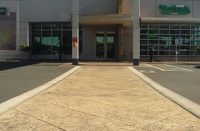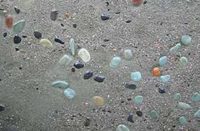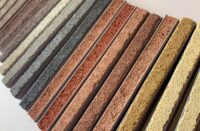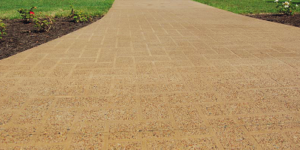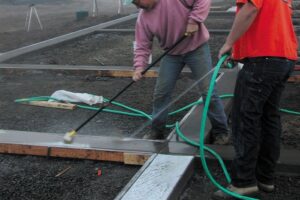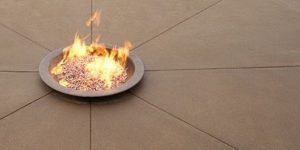While some concrete contractors might consider surface retarder to be a purely utilitarian product to provide traction, Tom Ralston of Tom Ralston Concrete sometimes uses it more like a paint brush on a hard, horizontal canvas. Or a turkey baster.

“When all you have is a blanket exposure of sand, it’s very hard to see it in a way that’s dramatic,” he says.
So he uses retarder as a tool to add decorative veining and aid in exposing such organic-looking embeds as shells, sea glass and aquarium sand. He selectively drips retarder to create special effects or swirls of pattern to suggest water streams or other specialty effects once the underlying aggregate is revealed.
Cam Villar, director of marketing and creative at L. M. Scofield, recommends concrete artistry through aggregate exposure and color. Scofield sells Lithotex Top Surface Retarder and Chromix Admixtures, and advocates both as a way of expanding your color palette. He mentions Quarry Red, a Scofield color additive, as an example.
“You can add bands of surface retarder to give it a texture and color variation while only using one color product,” he says. “The aggregate doesn’t have the color, only the binding concrete around it. So the net effect is that you will have created a lighter shade or even another color.”
All of this creative expression takes practice. Ralston recommends working on your own time on a 10-by-10-foot slab. Villar says it’s a good idea to commit your artistry to a job site sample first and let the client see what you’re up to.
“Make sure you’re working from the same mix design, since there are endless factors, from the product used to the application process and the skill of the worker,” he says, “that can affect your work.”
